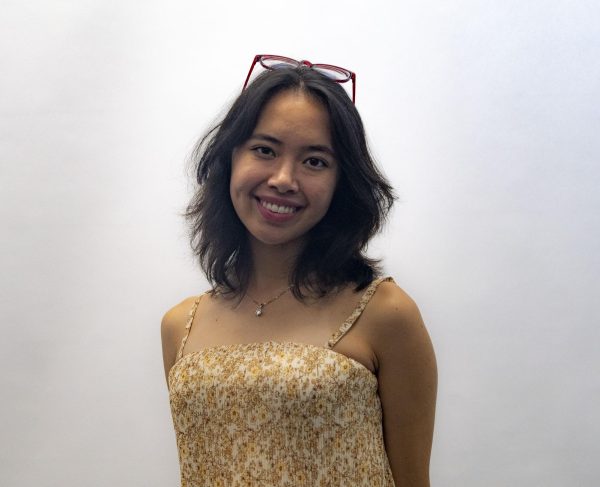An AVID Opportunity
The AVID program is a helpful resource that prepares students for the academic and social aspects of higher education and allows them to explore potential pathways beyond high school.
College. Seemingly out of focus as a freshman, but just beyond the horizon as a junior–accompanied, often, by a growing sense of urgency and the feeling of finally growing up. Every junior has a different way to prepare: SAT and ACT prep, extra college courses, trips to the Nest. There are some juniors, though, who are in their third year of planning for life after high school: the AVID students.
AVID, or Advancement Via Individual Determination, is a nationwide college readiness program founded in 1980. Throughout the course of the four-year program, students learn about the American university system and build study skills.
“My [older] sister really encouraged me to join,” said junior Elizabeth Baranowski. “When she was in high school, she didn’t know about AVID, and she regrets it because it could have helped her with college résumés and applications. So she was like, ‘Oh my goodness. You need to join this program. It’s really going to help you in high school.’”
The program works on small and large-scale levels to improve the success of their students: from frequent meetings with RUHS-alumni tutors to Socratic seminars, AVID prepares students for both the academic and social aspects of higher education. Throughout the year, classes also visit local colleges and get a taste of campus culture.
“Cal State Pomona, which is the last college we went to, was super interesting. I love the campus. It seems like a very homey, cozy college. There was this college tour guide, and she walked us through what felt like [every corner] of the school,” Baranowski said.
Unlike elementary and middle school field trips, Baranowski “loves”exploring campuses because “there’s a lot of applicable knowledge.”
“It’s not one of those field trips where you’re like, ‘Oh my god. I just want to leave. I don’t even know what the guide is talking about.’ I always learn something new,” Baranowski said.
Though Baranowski was encouraged to join the program, she noted that there is a certain stigma around the program–especially when applications open for eighth graders to plan for freshman year.
“I used to get people saying, ‘Oh, you want to do AVID, so that must mean you need study help.’ Not necessarily—there’s a huge array of people who are in AVID; it’s a fun little mix of everybody in high school. There are some really talented, smart, ambitious people and there are some who are more laid back. AVID is not a specific clique of people–it’s for everyone,” Baranowski said.
Though AVID is technically a college readiness course, it doesn’t push students to apply for university. According to Baranowski, it’s all about “exploring different paths.”
“AVID is really about preparing you for your future and what you want to do after high school; whether that’s applying to college or going to a trade school or something else. It opens a bunch of opportunities for you to explore and research about those choices to figure out, ‘What’s my next step? How do I get there?’ [That] is great for high schoolers, especially because some of us are still figuring out what we want to do,” Baranowski said.
From a teacher’s perspective, AVID is all about providing support. Now in his 7th year of teaching the class, English teacher John Burke notes that AVID is like the “happy middle ground” of counseling.
“Let’s face it: counseling is the high and the low. [Frequent visitors] of the [counselors] are often on specialized educational plans like the IP or the 504 or kids who are in AP classes that want to go to prestigious colleges. They make up two ends of the spectrum—those are the kids who book the most time of the counselors. So for the CP kids who don’t really have that support are the ones that can fall through the cracks. AVID is the sort of program that catches them,” Burke said.
Unlike his Noir/1980s Literature classes, Burke’s AVID students stay with him in four-year cycles, something that even after 31 years of teaching, he “really enjoys.”
“Some teachers don’t like it at all; they like to have different kids every year. But I’ve always loved having the same kids more than once. You really get to know them. It really does become like family [until they leave for college], and you get a new cycle of students,” Burke said.
According to Burke, four years in the classroom with a student provides a “unique opportunity” to learn about them.
“The more you get to know [the students] at a big school like ours, and the more time you spend with them, the more empathetic and the more understanding you become. You get to see the whole kid. You don’t just see somebody for a block class twice a week and one hour on Monday. You see the whole kid over four years. It makes you realize the extent of their academic abilities, their personalities, their maturity levels. It helps me to be more understanding, which helps me help them,” Burke said.
Community is Baranowski’s favorite aspect of the program: not only is she able to grow comfortable with a specific teaching style but also build lasting friendships.
“I’ve strengthened so many friendships with this program, and made new ones,” Baronowski said. “Mr. Burke says it half-jokingly, but we really are like a family.”

Literature and grilled cheese enthusiast. Will play We're Not Really Strangers with anyone (even you!)



